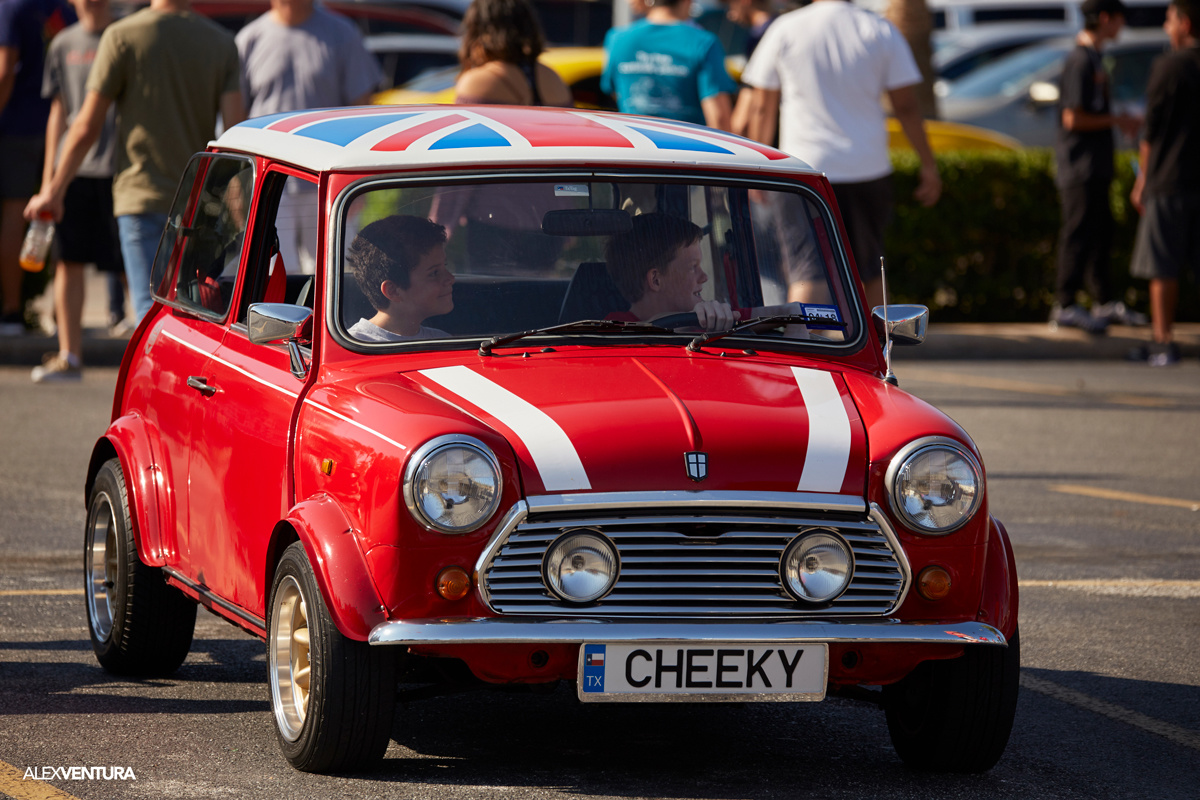In my camera bag, there are two lenses I use the most and it all comes down to what I am shooting that decides which of the two I am using. For a majority of my event coverages, I pull out my standard zoom lens as my go-to weapon of choice. Occasionally, I do find myself yearning for extra reach, especially when I am stuck at a certain distance and can’t walk any closer to the subjects. Looking for a telephoto lens, I tested out the Sigma 100-400mm f/5-6.3 DG OS HSM Contemporary telephoto lens, aka the “light-bazooka,” which is considered highly compact and lightweight to the other contenders on the market. This lens sounds like the perfect fit for me.
First Impressions
As soon as I picked it up, I knew this lens was bigger and heavier than my Canon EF 24-105mm f/4L IS standard zoom lens which was to be expected, but at the same time, it didn’t feel like a complete monster in its compact frame. For the given focal length, I think it had a good size and weight to it. It didn’t feel like I was holding the same kind of build I am used to with L-series lenses, however, the Sigma lens still felt like a solid, well-built lens. I was eager to test out how it would perform mounted on my Canon EOS 6D camera.
Who Is It For
Sigma lists the ideal use this lens as travel, nature and wildlife, and bird photography with the list of typical use adding sports and action, as well as macro photography. If your photography falls into these realms of work and you are in search for a compact, lightweight telephoto lens for portability and quality, then this was made with you in mind.

400mm, 1/250 at f/6.3
The Lens
Like I said before, it’s a solidly built lens with specs listing it at 2.55 pounds and 7.18 inches in length which I didn’t mind carrying around in my camera bag. I usually try to keep my bag as light as possible so when I do carry it around, I can for long periods of time. The optics feature four special low dispersion elements to reduce color fringing and chromatic aberrations paired with a super multi-coating to minimize lens flare. In my testing, the lens held up well in this area. The Sigma lens comes with three options for focusing: auto-focus, manual override, and manual focus. The hypersonic motor did well while using autofocus with its quick and quiet action to nail focus. I really didn’t have to adjust focus, but the option is there if you need it. Using Sigma’s optical stabilizer, I would say you can achieve two or three stops of equivalent stability. A rubber sealing is incorporated for some protection in the mount design making it dust and splash resistant. If you are in need of extra reach, the lens is compatible with the optional TC-1401 and TC-2001. The lens is also compatible with the Sigma USB Dock for some fine-tuning and customizations, as I don’t have the dock I was unable to test this feature out.
How Did It Do?
I wanted to give it a fair assessment on how I would possibly use the lens as well as what genres it was ideal for. My first test was taking it out to a local Coffee and Cars gathering to see how it would hold up. In the beginning, I used my Canon 24-105mm L for the majority of my coverage, but towards the end, I reached into my bag and decided to give it a go. With a busy event like this, sometimes being further back is not a great thing as there are so many people walking around but I would still have the same problem with my standard zoom lens. I loved being able to zoom into cars that were parked further away without having to walk all over the parking lot. Same with zooming in for those detail shots or as the rides would exit the venue.

315mm, 1/640 at f/6.3

400mm, 1/640 at f/6.3
My second test was for something this lens may not be used for, but as I stated I wanted to test out the lens in what I usually do so I met up with local cosplayer TimelessTraveler for some portrait shots out in a park during the day. I brought additional gear with me but I ended up sticking with using the natural light without the aid of reflectors. For the vertical shots, I was still in range to where we could communicate and she could hear the shutter of my camera. Switching to horizontal orientation, I did have to step back further but we were still able to work through the shoot.

400mm, 1/125 at f/7.1
Switching into the genres of photography the lens was made for, I went to a shopping center nearby to capture some of the cars driving by as I didn’t really have any sports events I had plans on attending during my trial period. Using the lens's autofocus paired with the optical stabilizer, I was able to capture some panning shots of the cars and their drivers as they sped by. The camera and the Sigma lens didn’t feel too heavy as I handheld it while rotating for the shots.

227mm, 1/200 at f/8
The park nearby has some wildlife roaming around the lake so I made a spot there to test the reach of the zoom to get tight shots of the animals. I ended up standing at the park a lot longer than planned shooting away at the nutrias, turtles, ducks, and I was even able to catch a squirrel in the action of burying his nut.

400mm, 1/100 at f/6.3
What I Liked
- Sturdy build
- Optical Quality
- Sharpness
- Low chromatic aberration
- Affordable price
- Size and weight
- Optical stabilization
- Silent autofocus
What I Didn’t Like
- No tripod collar
- Dust and splash at the mount only
- Locking switch works only at 100mm
- Zooming between 300-400mm
- Conclusion
The Sigma 100-400mm f/5-6.3 lens performed well for this “light bazooka” of a lens. While there is some vignetting when shooting wide open, I feel like it’s not significant, and personally, I don’t mind a small bit of darker vignetting in photos. Normally I do not like variable lenses; I don’t the fact that the aperture will change on me if I am zooming from one end to the other, but to save weight and keep this lens at the given price point, I could live with it. Throughout the majority of my testing, I handheld my Canon 6D with the Sigma 100-400mm lens attached and didn’t have any issues with the weight, but having a tripod collar when using a tripod would have been nice to have. Zooming between 300mm and 400mm feels like a slight turn and you have cleared 100mm. Don’t get me wrong, you won’t be disappointed with this lens especially at this price point. It has great sharpness and image quality packaged all in this compact and lightweight telephoto lens. Sigma has definitely captured my attention with their ART series, but this lens might be the first non-Canon lens to join the rest of my lenses and start my Sigma collection. As a note, since I was reviewing the lens and its performance, I didn't retouch or edit the photos and only applied some white balance and minor exposure correction.
Below are some more photos from my testing of the lens.























I'm waiting on a comparison between this lens and the Tarmon 100-400mm f4,5-63 that will come out later this year, it's a bit faster at 100mm and it does have a tripodcollar.
This looks like a nice lens, however, I am wondering why would I want this lens instead of the 150-600?
I'm guessing $200 and 4.25lbs vs 2.55lbs. That said, I'm debating between the two as well.